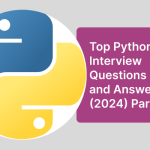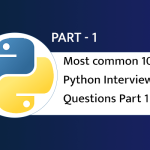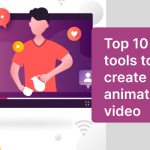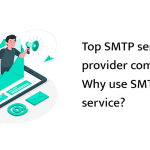Cloud-native application development is the process of developing, building and deploying applications in the cloud environment. In today’s competitive world, organizations should think proactively while designing, building and deploying applications.
Cloud-native was created to benefit from its size, flexibility and resilience. Today, cloud-native application development facilitates designing, developing and operating an application as part of app modernization. As of now, more than three-fourths of businesses give emphasis to developing cloud-native applications.
There are no hard and fast rules for creating cloud-native applications. Usually, it is based on fixing the problems businesses face and the software application used. Nevertheless, every business adopts some services that give the best outcomes. In this article, we will discuss 5 best practices that help develop cloud-native applications in 2023.
How to Build Cloud Native Application in 2023
In 2023, developers want to use cloud resources as the demand for cloud-native application development is rising. There are several advantages cloud-native applications possess, and therefore, it is preferred by developers. With its high resilience feature, the security gets double-folded. Even if there is a cyber attack, it can be dealt with easily within a specific container while other app parts remain intact.
The container orchestrator handles such rare situations of cyber attacks. Similarly, when some areas of infrastructure show issues or a specific data centre faces problems, cloud-native software helps developers to shift a component to an alternative environment within the cloud as it is highly portable.
Here we discuss a few features that get incorporated into cloud-native application development. Let’s see how it is helping to develop, deploy and manage cloud-native applications without much concern.
1. Use Serverless Architecture
A very important approach to cloud-native application development, serverless architecture helps build applications without managing servers. It simplifies the application development process. However, it does not mean that the absence of servers in serverless architecture they are isolated from application development. The cloud provider manages the provisioning, maintenance and scalability of servers. Developers package the code in containers for deployment. When deployed, the serverless apps scale up or down in accordance with the demand.
2. Containers
Containers are lightweight virtualization helping developers to package and isolate application code. Further, it is easy to transfer contained applications between several environments. It is also significant when it comes to security. When you incorporate security into the containers, it becomes scalable and reliable. Additionally, it is easy to move applications between public, private, hybrid cloud, and on-premise data centers. Microservices help app developers to create applications as a set of loosely coupled services. This approach will likely continue in 2023 and beyond since scaling and managing applications quickly become essential for developers.
3. Low-code/No-code Development
Applications with no code or zero code will be preferred by developers as it helps innovations quickly. No-code/ low code is also user-friendly and simplifies app development, and reduces product development time as it saves hand-coding time. Businesses can improve the development and delivery processes using a no-code or low-code development. Also, enhance collaboration between every department, and ensure that everything is in agreement.
4. API Management
API management involves creating, publishing, and managing application programming interfaces or APIs. Cloud-native application development uses microservices. Communication between services is implemented using a well-defined interface which is an API. APIs are vital components of cloud-native architectures. Using OpenAPI is highly beneficial in the documentation of cloud-native services. In OpenAPI, developers can freely use the tools they need and deploy cloud-native APIs on cloud infrastructure.
5. Data Analytics
Data analytics plays a crucial role as more data gets stored in the cloud. With the increase in mobile device use and data loads, the Internet of Things (IoT) data analytics has become critical for enhancing the performance of cloud-native applications. Furthermore, there will be an increase in using artificial intelligence (AI) and machine learning (ML) to analyze data and identify patterns.
Conclusion
Recently, there has been a change in approach in the way applications are built and deployed. Conventional monolithic programs are created as a single unit and changes and updates require re-deployment of the entire application. Indeed, the process demands more time and money, eventually leading to increased downtime and reduced productivity. Cloud-native applications use the advantages of cloud environments and allow businesses to build, deploy and maintain scalable, flexible and reliable software applications. test automation services help deploy tests in clusters, and they are not connected to continuous integration and continuous delivery/continuous deployment (CI/ CD) framework. Cloud-native applications often take the form of loosely coupled services which can be developed, deployed, maintained and scaled independently. This directly translates into faster development, deployment, easier maintenance and enhanced scalability of cloud-native applications.











